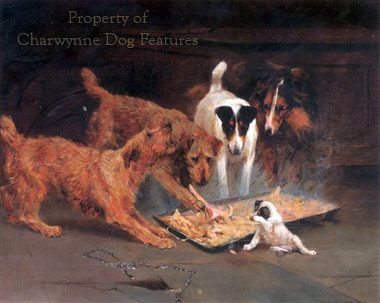183 Dogs in the Dock
DOGS IN THE DOCK
by David Hancock
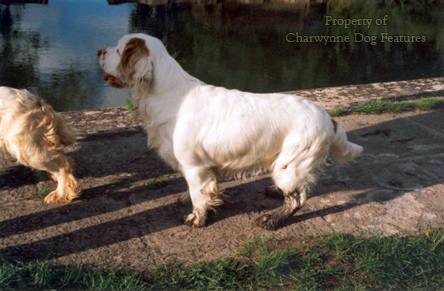
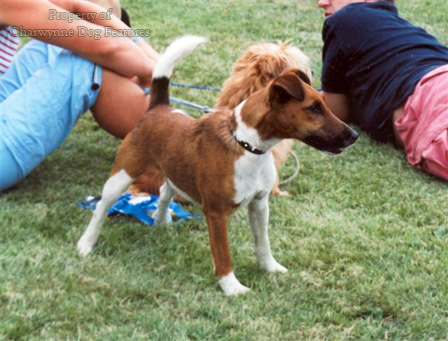
These are momentous times in the world of the domestic dog in Britain. Legislation has at long last been passed to curb the irresponsible owning of dogs bred to fight, after years of government ministers failing to heed sensible warnings from those organisations having to face the problem. The Kennel Club has at long last taken steps to reduce the excessive breeding of pedigree dogs, by declining to register litters from bitches past their best and by limiting the number of litters which can be registered from one bitch in her lifetime. Steps are being taken to register two native breeds of dog: the long established Llewellin setter and the more recently created very game Plummer terrier. Moves are afoot to run field trials for pointers and setters outside the authority of the Kennel Club. A working Clumber spaniel, lighter and more functional, is being promoted. A number of working terrier men are attempting to recreate the original Sealyham terrier. "Hunt, point and retrieve" gundog breeds from mainland Europe are being used more and more by sportsmen, commendably keener on the sport of shooting than the size of the day's kill. And the growth in working tests for gundogs seems to be having the admirable effect of making many more owners work their dogs.
But it is not all good news. The increase in unwanted aggression in breeds once superbly bred by knowledgeable devotees is alarming. The continued ability of the unscrupulous to breed from stock carrying congenital diseases is disturbing. The registration of the Parson Jack Russell terrier as a pedigree breed by the Kennel Club can, on the evidence provided by every other pedigree terrier breed, only produce deterioration. The handsome golden retriever is in considerable decline as a working gundog, with the loss of the genuine coat colour in both this admirable breed and the equally popular yellow Labrador being an additional source of concern. The loss of type in the English springer spaniel is a worry. And we still lack a registration scheme for dogs in Britain to make owners traceable and accountable for the behaviour of their pets and protect dogs.
Perhaps because of our fondness for the past and our strange reverence for institutions we are sometimes rather loathe to accept change and challenge the aptness and relevance of organisations in Britain traditionally regarded as authoritative. The role of the Kennel Club for example needs to be continuously reviewed if it is to face up to the moral implications of its policies or disinclination to act when new demands are made on it. 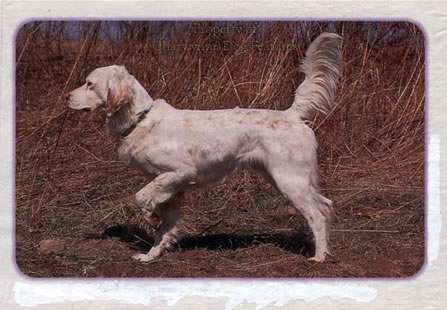
More anger is caused by the pending legislation to outlaw the docking of dogs' tails than by the deliberate breeding to design of a dog like the bulldog that cannot give birth naturally or breathe without difficulty and now bears little resemblance to its own ancestors. This intentional discomfort inflicted on a dog by human whim is condoned by a club actually set up by well-intentioned dog fanciers in the last century to promote the pedigree dog. The docking of dogs' tails for cosmetic reasons has long been carried out by veterinary surgeons with the blessing of their 'institution', the British Veterinary Association, whatever their views now.
The imminent banning of the docking of dogs' tails is to be welcomed for a number of different reasons. Firstly, for breeds like the Dobermann and the Rottweiler to have nothing to wag or protect a bitch's modesty is a form of indirect cruelty. Secondly, for breeds like the Norfolk and the Norwich terriers to have next to nothing of a tail is not traditional. Plucky little breeds like these were originally bred to exterminate ground vermin, were real 'earthdogs' and needed a tail so that the terrier men could grab it and extract them when they got stuck. 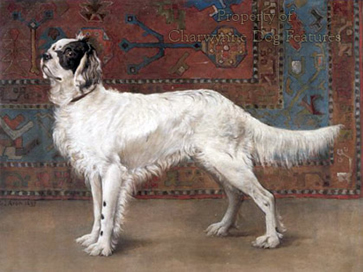
Thirdly, most pedigree terrier breeds, like the Welsh, Lakeland, fox, Irish and West Highland are now bred too short in the back for their working terrier ancestry. To work underground a terrier simply has to have a flexible back, with the ability to twist and turn. The modern need to produce a docked tail which stands upright in the show ring has led to a shortened back and too 'cobby' a build. With the advent of undocked tails, terrier breeders will have to return to the longer back, with a lower set to the tail, and that can only lead in time to a dog better fitted physically for its original role.
Gundog men, with their spaniels, Hungarian vizslas, Weimaraners, German short and wire-haired pointers, Brittanies and Spinones (all with docked tails) will plead that docking is justified because of the damage which can occur to a vigorously wagging tail in dense cover. But the retriever breeds, our own pointer, the two Munsterlander breeds, the long-haired Weimaraner and the long-haired variety of the German pointer (the 'langhaar') all feature the full tail. I think it is fair to say too that a spaniel will wave a short tail much more violently than a long one, especially in bramble country.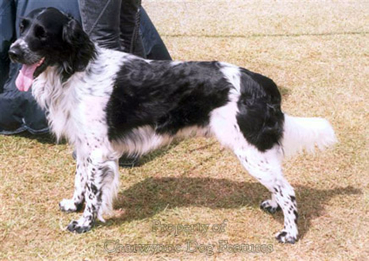
But I find it difficult to get excited about the length of dogs' tails at a time when deformed dogs are being intentionally bred, when carriers of congenital diseases are being knowingly bred from and when cruelty to dogs is at an all time high. The introduction of a dog registration scheme will not bring such cruelty to an abrupt halt, suddenly stop loose dogs causing accidents, biting children or fouling pavements. But it will lead to their owners being traced and made accountable; in time this can only lead to greater responsiblity.
For the government to consult the Kennel Club over the desirability of the introduction of a national dog registration scheme is faintly ridiculous. The Kennel Club is mainly financed by its own registration scheme and is hardly likely to support an alternative which would quite probably bring financial disaster to them. What we need now, if we really are a nation of dog lovers, is a wide-ranging study of dogs in society: the soundness of their breeding, the accountability of their owners, the problems facing the police, the RSPCA and local authorities, a good hard look at those who elect to exaggerate breed features to the detriment of a dog's health and how to promote the best interests of dogs rather than those of their fanciers. It is easy to pass laws which lead to the compulsory destruction of dogs bred for fighting; not so easy to get man to face up to his responsibilities to dog.
